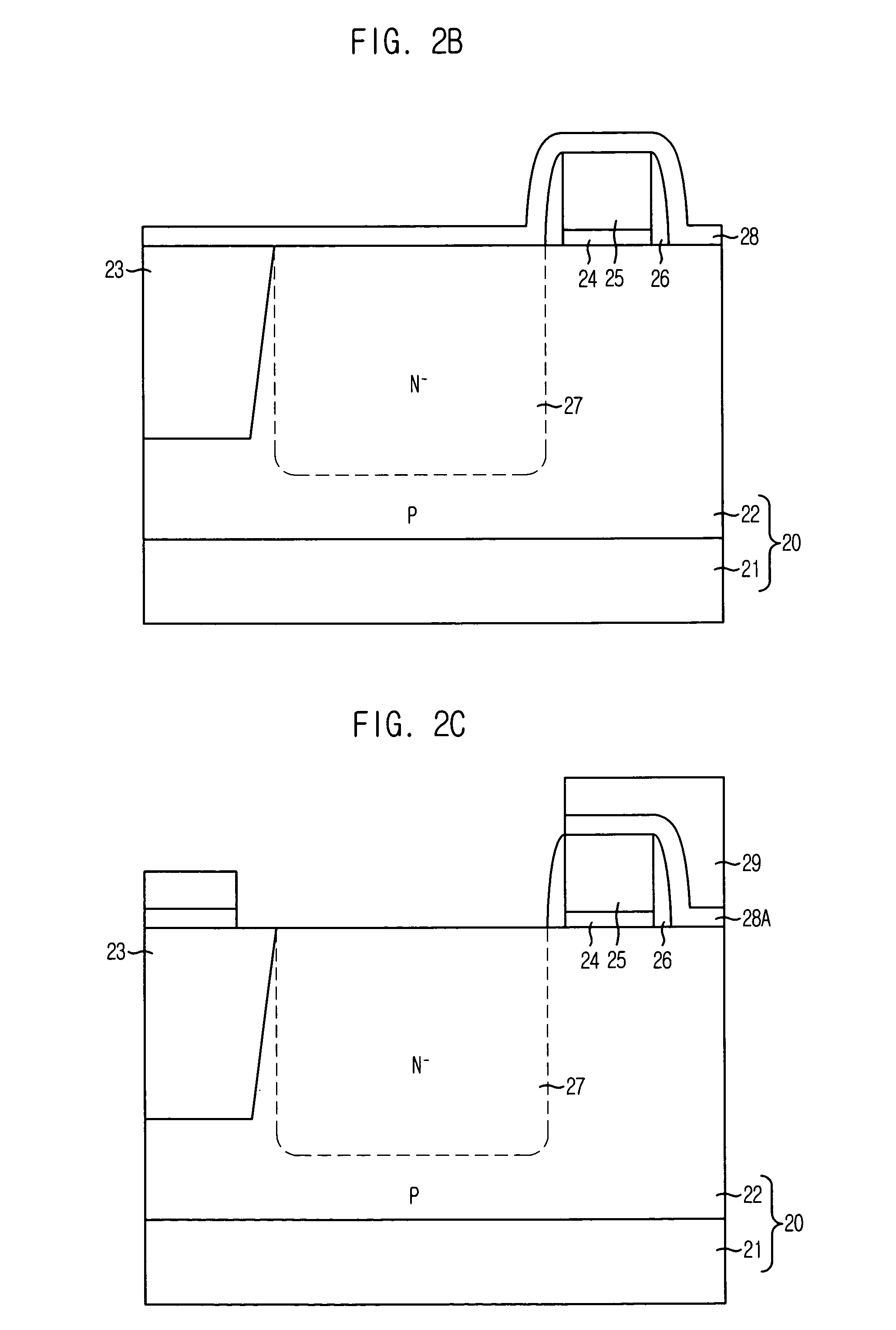Method for fabricating CMOS image sensor
a technology of complementary metaloxide semiconductors and image sensors, applied in the field of image sensors, can solve the problems of difficult to keep a shallow depth of boron implantation, limited light efficiency, dark current, etc., and achieve the effects of improving the light efficiency of blue light, small thickness, and reducing crystallization defects
- Summary
- Abstract
- Description
- Claims
- Application Information
AI Technical Summary
Benefits of technology
Problems solved by technology
Method used
Image
Examples
Embodiment Construction
[0020]A method for fabricating a complementary metal-oxide semiconductor (CMOS) image sensor in accordance with exemplary embodiments of the present invention will be described in detail with reference to the accompanying drawings.
[0021]FIGS. 2A to 2E are cross-sectional views illustrating a method for fabricating a CMOS image sensor in accordance with a specific embodiment of the present invention.
[0022]As shown in FIG. 2A, a P-type epitaxial layer 22 lowly doped with P-type impurities is grown over a P++ substrate 21 highly doped with P-type impurities. A field oxide layer 23 is formed in a predetermined portion of the P-type epitaxial layer 22. Depth of a depletion layer of a photodiode can increase because of the lowly doped P-type epitaxial layer 22, and thus, photosensitivity can be improved. A crosstalk between unit pixels can be reduced by reaggregating the photocharges through the existence of the highly doped P++ substrate 21. The crosstalk occurs due to irregular movement...
PUM
 Login to View More
Login to View More Abstract
Description
Claims
Application Information
 Login to View More
Login to View More - R&D
- Intellectual Property
- Life Sciences
- Materials
- Tech Scout
- Unparalleled Data Quality
- Higher Quality Content
- 60% Fewer Hallucinations
Browse by: Latest US Patents, China's latest patents, Technical Efficacy Thesaurus, Application Domain, Technology Topic, Popular Technical Reports.
© 2025 PatSnap. All rights reserved.Legal|Privacy policy|Modern Slavery Act Transparency Statement|Sitemap|About US| Contact US: help@patsnap.com



